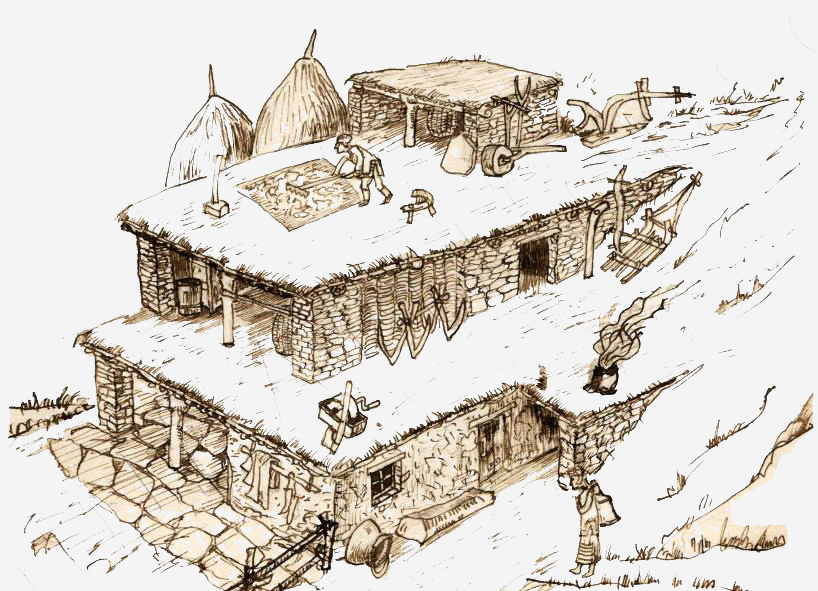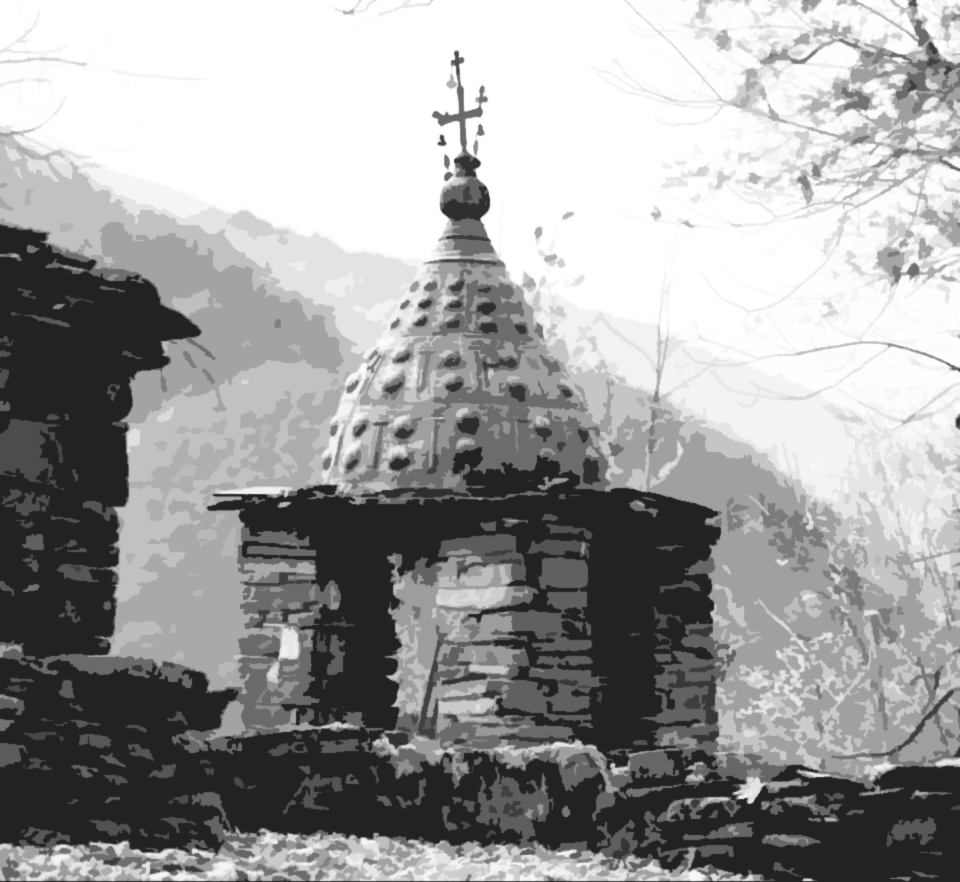
Secular Architecture
Within the Aragvi Protected Landscape, secular architectural monuments include settlements built with traditional spatial structure. These feature residential houses, utility buildings, and defensive structures such as towers and fortresses.
Unlike the neighboring regions of Pirikita Khevsureti and Tusheti, no complete fortress-villages have survived within the Aragvi Protected Landscape.
These fortress-villages, characteristic of other highland areas, typically consisted of homes where each dwelling had its own fortification. However, many villages here still retain well-preserved defensive towers that once served to protect the entire settlement—for example, Mukho in Pshavi, Batsaligo and Khakhmati in Piraketa Khevsureti, and Makharta in Gudamakari. In Kvemo Pshavi (beyond the main Pshavi Valley), several medieval fortress complexes have also been preserved, such as the fortresses of Simagreuli and Khelkhvitla near the village of Gometri.
As for traditional residential architecture, all three sub-regions of the landscape—Pshavi, Khevsureti, and Gudamakari—were dominated by flat-roofed houses equipped with an open hearth and a chimney rising above the roof. Several examples of these buildings still exist in varying conditions across the Protected Landscape. The best-preserved is located in the upper part of Barisakho. Other surviving examples can be found in Ukanapshavi and Gudani in Khevsureti, and in Atnokhi in Gudamakari.
Among other traditional structures, notable examples include historic watermills, such as those in Datvishi (Khevsureti), as well as remnants of ancient roads—most notably, sections of the old “Georgian Military Road” above Bursatskhiri in Gudamakari.
Lastly, the landscape is scattered with numerous abandoned villages and archaeological sites spanning different historical periods, including artifacts from the Kura-Araxes culture.

Pshavi is home to a memorial site of great cultural significance – the House-Museum of Vazha-Pshavela, one of Georgia’s most prominent 19th-century classical poets, who spent most of his life in his native village of Chargali. A similar house-museum dedicated to the prose writer Goderdzi Chokheli is located in the village of Chokhi, in the Gudamakari valley.
Some of these cultural landmarks are officially designated as monuments of historical and cultural heritage and are under the care and restoration oversight of the National Agency for Cultural Heritage Preservation of Georgia.
Sacred Sites (Shrines)
Shrines are an essential part of religious life across all three regions of the Aragvi Protected Landscape. They are typically located in or around villages, as well as in open landscapes, and local communities are highly sensitive to any disturbance or disrespect toward these sacred places.
These shrines traditionally serve the syncretic cults of the Eastern Caucasus highlands—spiritual systems that are also found among other sub-ethnic and ethnic groups in the region, including the Tush, and, prior to Islamization, the Chechens and Ingush. Scholars widely agree that this represents one of the last surviving pre-Christian religious systems in all of Europe.
The belief system includes not only a deus otiosus (a “retired” or non-intervening deity) and local hero-deities, but also numerous Christian saints and religious concepts. Among scholars, there is ongoing debate as to whether these Christian elements should be understood as substratum remnants or as a superstratum overlay.

A decisive fact is that the historical region of Phkovi (comprising Pshavi and Piraketa Khevsureti) is the heartland of this belief system, from which it spread to other areas such as Gudamakari and Tusheti. Virtually all of the most important shrines—and the associated deities—are located in Pshavi. These include Lashari and Tamar-Ghele near Khoshara, Kopala near Udzilaurta, Yakhshari near Shuapkho, and Pirkushi near Akhada. In Piraketa Khevsureti and Gudamakari, the key shrines are Gudani’s Cross and the Firimze-Fudzi Angel shrine in Chokhi, respectively.
Last but not least, the phenomenon of sacred groves—known as khatiskhevi (lands of the icon)—remains present in the highlands of Eastern Georgia. These sacred forests are, in essence, natural reserves established and protected for religious reasons. They serve as outstanding examples of effective forest conservation and sustainable use. These groves are often virtually untouched, showcasing high aesthetic value and rich biodiversity. Sacred groves may represent some of the few remaining forest areas in the region that have avoided significant human impact either entirely or over extended periods.
On the other hand, most Christian churches throughout the Aragvi Protected Landscape date from the 19th century—some of them architecturally notable, such as those in Magharoskari and Lutkhubi. In Kvemo Pshavi, a few churches of medieval origin also exist, though generally modest in size.
In recent years, there has been a noticeable resurgence of Orthodox Christianity among the local population. However, traditional festivals and rituals associated with the older shrines remain well-preserved and continue to play a significant role in community life.